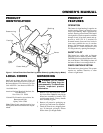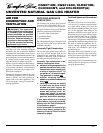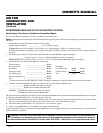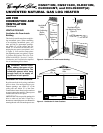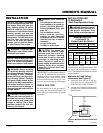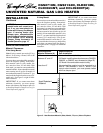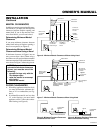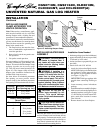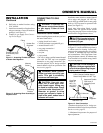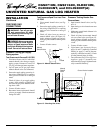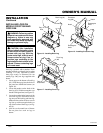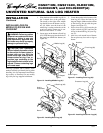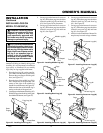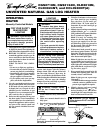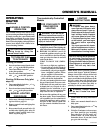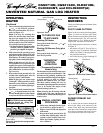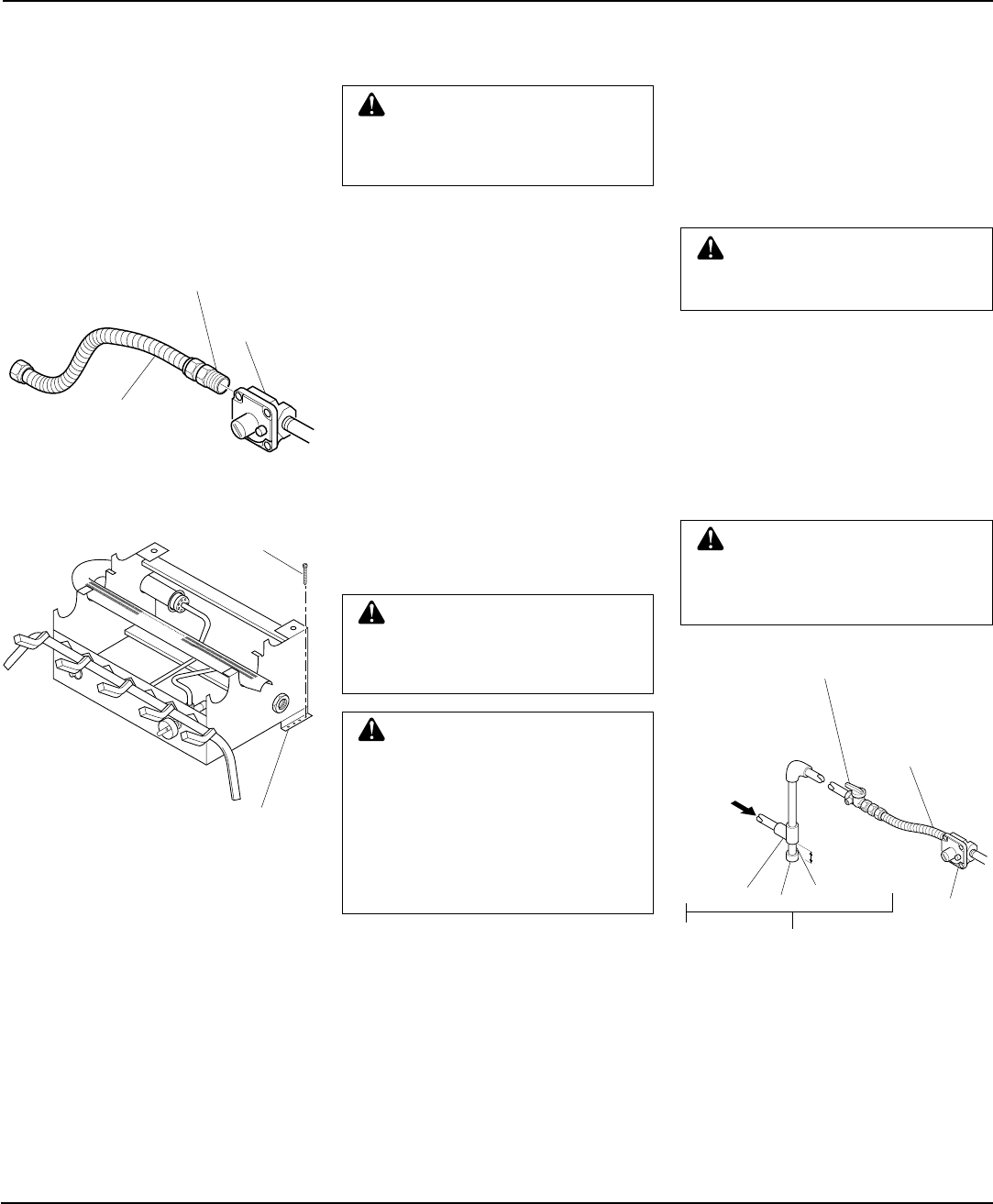
11
104385
OWNER’S MANUAL
INSTALLATION
Continued
Heater Gas
Regulator
Flexible Gas Hose
(if allowed by local
codes)
Figure 11 - Attaching Flexible Gas Hose
to Heater Gas Regulator
Fitting
Figure 12 - Attaching Base Assembly to
Fireplace Floor
6. Drill holes at marked locations using
3/16" drill bit.
7. Attach base assembly to fireplace floor
using two masonry screws (in hardware
package) (see Figure 12).
8. Connect to gas supply. See Connect-
ing To Gas Supply.
Masonry
Screw
Mounting
Bracket
CAUTION: Avoid damage to
regulator. Hold gas regulator with
wrench when connecting it to gas
piping and/or fittings.
Figure 13 - Gas Connection
* Purchase the optional A.G.A. design-cer-
tified manual shutoff valve from your dealer.
See Accessories, page 25.
** Minimum inlet pressure for purpose of
input adjustment.
CONNECTING TO GAS
SUPPLY
WARNING: A qualified ser-
vice person must connect heater
to gas supply. Follow all local
codes.
Installation Items Needed
Before installing heater, make sure you have
the items listed below.
• piping (check local codes)
• sealant (resistant to propane/LP gas)
• manual shutoff valve *
• test gauge connection *
• sediment trap
• tee joint
• pipe wrench
* An A.G.A. design-certified manual shutoff
valve with 1/8" NPT tap is an acceptable
alternative to test gauge connection. Pur-
chase the optional A.G.A. design-certified
manual shutoff valve from your dealer. See
Accessories, page 25.
CAUTION: Use only new,
black iron or steel pipe. Inter-
nally-tinned copper tubing may
be used in certain areas. Check
your local codes. Use pipe of 1/2"
diameter or greater to allow
proper gas volume to heater. If
pipe is too small, undue loss of
pressure will occur.
Installation must include a manual shutoff
valve, union, and plugged 1/8" NPT tap.
Locate NPT tap within reach for test gauge
hook up. NPT tap must be upstream from
heater (see Figure 13).
Apply pipe joint sealant lightly to male
threads. This will prevent excess sealant
from going into pipe. Excess sealant in pipe
could result in clogged heater valves.
CAUTION: Use pipe joint seal-
ant that is resistant to liquid pe-
troleum (LP) gas.
Install sediment trap in supply line as shown
in Figure 13. Locate sediment trap where it
is within reach for cleaning. Locate sedi-
ment trap where trapped matter is not likely
to freeze. A sediment trap traps moisture
and contaminants. This keeps them from
going into heater controls. If sediment trap
is not installed or is installed wrong, heater
may not run properly.
WARNING: Never connect
heater to private (non-utility) gas
wells. This gas is commonly
known as well-head gas.
Tee Joint Cap Pipe Nipple
3" Minimum
Sediment Trap
Gas
Regulator
From Gas
Meter (5"
W.C.** to
10.5" W.C.
Pressure)
A.G.A. Design-Certified Manual
Shutoff Valve With 1/8" NPT Tap*
Approved Flexible
Gas Hose (if
allowed by local
codes)
Continued



